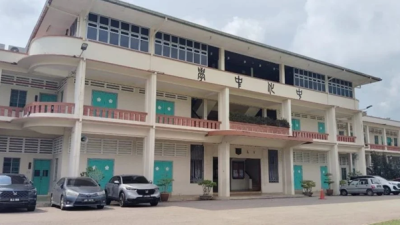
Senior education minister Mohd. Radzi Md. Jidin announced recently that all primary school students in the country will have to go back to school from April 17 (Group A states) or April 18 (Group B states).
Prior to that, the education ministry ruled that all students in schools with fewer than 600 students would have to go back to school while for the other schools, all Years 1 and 2 students have to go back and Years 3 to 5 take turns to go back to school.
With primary schools wholly back to physical learning, teachers will be able to teach the students face-to-face, and this helps promote learning efficiency while solving the issues of unsteady network and equipment deficiency.
However, with the coronavirus still very much evident, this will also mean large amounts of human contacts and consequently increased risk of infection.
As a matter of fact, more economic sectors are now fully opened as we begin to live with the virus, and it is therefore natural that students will have to go back to their schools soon.
The thing is, are the education ministry and the schools prepared for it so that infection risk is kept to a minimum? Are the antivirus SOPs clear and well-thought?
Not yet, from what we can see now.
Proper arrangements, comprehensive antivirus SOPs and consistent and unambiguous guidelines must be in place to assure parents of their children’s safety at school.
First of all, the authorities must have clear and consistent guidelines as to when to shut down the class in the event of an infection.
From what we learn, the guidelines now practiced in various states are not consistent. Some schools shut down the whole class on a single case, while only eight students sitting around an infected student need to be quarantined in schools in Negeri Sembilan and Selangor. It is also said that in KL, only four students sitting directly in front, behind, on the left and right of the infected student have to be quarantined.
This confuses the public as to which is the most effective measure against the virus and what steps need to be taken once the virus is detected in a classroom.
It is imperative for the education ministry to come up with uniform and unambiguous guidelines that will be strictly followed by the schools.
Additionally, it has become controversial whether schools should publish the exact number of people infected with the virus, now that we have transitioned to the endemic phase of Covid-19.
Currently most schools will not announce the actual numbers, an act believed to not cause panic among the parents and affect student attendance.
Nevertheless, lack of transparency may also worry the parents who are very much concerned about the safety of their children.
Full transparency is essential to help contain the virus by building mutual trust with the parents. Covering up facts and triggering doubts and fears among parents is never a good solution.
While the ministry and school authorities have their reasons, parents also have their own positions. Perhaps the authorities should listen to the views of all parties and explore all possibilities in order to arrive at the most acceptable solutions.
Although student attendance and schoolwork are important, they are secondary to the children’s health and safety, to the parents.
Parents are also concerned about whether unvaccinated teachers will be allowed to come into the classroom and teach. According to earlier arrangement, unvaccinated teachers can only conduct online classes, but as all students will soon be required to go back to school, making them learn in front of computer screens inside the classroom is not only ineffective but also ironical. This matter should be handled appropriately so as not to affect the students’ learning progress.
Reinstating physical lessons as we live with the virus is beyond question, allowing students to learn more effectively and catch up with what they have missed out. But at the same time, proper arrangements, comprehensive antivirus SOPs and consistent guidelines must also be in place to assure parents of their children’s safety at school.
ADVERTISEMENT
ADVERTISEMENT


































